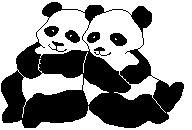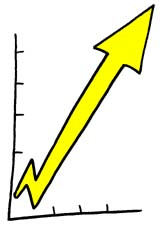| Search Art Prints | ||||||||||||||||||||
| Search Artists | ||||||||||||||||||||

|
||||||||||||||||||||
|
|
|||||||||||||||||||

The History and Copyright of Clip Art
Clip art is a collection of graphic images of various shapes, sizes and colors, including maps, diagrams, illustrations, cartoons and designs, available to you for copying and pasting into your own page layout. You can shop for any activity that needs an image, such as business presentations, birthday/wedding invitations, sports events, holiday greetings, etc. People associate clip art with web decoration, but the images are also available in printed format. Clip art consists exclusively of illustrations, and excludes photographic images.

Clip Art History
Clip art started as reproductions of simple line art drawings. These drawings were pressed full size onto a board where text or additional images were used. The board would be referred to as a ‘mechanical’ and ready for photographing.
When personal computers were introduced on the market, the average users needed art to spice up their projects. The clip art industry was initiated with the creation of desktop publishing. In 1983 VCN Excuvision introduced a package of clip art for pc users, and in 1984 Macintosh followed up with its own release, graphical user interface (GUI), a term that has become synonymous with web images. Also in 1984, the package of illustrations called “ClickArt” was released.
It was not until 1985 when Aldus released Page Maker 5 for desktop publishing that clip art came into its own. Aldus made it possible for the home user to produce professional quality publishing, which rendered clip art very popular and in great demand. People started producing business presentations, newsletters, invitations, and brochures. Technology allowed for simple designs and basic
 colors.
colors. Steady progress was made in both home computing and clip art. In the early 90’s, the production of cd-roms with an array of electronic art became a necessity. Microsoft began to include clip art in their products. Another company, T/Maker, started producing massive amounts of digital art. Some of their copyright free collections held over 500,000 images.
Through the years, clip art has been a steady add-on for computer programs and a revenue generator for companies. In the 2000’s, the emergence of the internet as a sales tool was recognized. Clip art on the web was sold by reputable websites that are still around today. Clipart.com, GraphicsFactory.com and Weddingclipart.com have online libraries for sale, allowing clip art to be sold not only as bundled software from computer companies, but also as individual pieces in a collection of illustrations. Moreover, subscriptions to clip art websites are increasing at a fast pace. Clip art is a mini industry that is proving to be self reliant and here to stay.
Copyright for Clip Art Usage
The legal aspect regarding the usage of images on the web has long been a grey issue. The web started out with text only, left-justified, a warehouse of articles. It was not until it was well established that images, buttons and graphics were introduced. Unfortunately, by that time, the action of downloading images for personal reuse was rampant. Subsequently, companies and their lawyers have now become
 vigilant with respect to the issue of copyrights.
vigilant with respect to the issue of copyrights.The dictionary defines copyright as ownership over a creation. Whether that creation is literary, audio, musical, or has any other artistic attribute, its ownership belongs to the creator. That copyright is in force for the life of the creator and 50 years after. Just because some of these creations are posted to the web does not mean that the item is in the public domain. Another great misconception involves the common belief that if you download it and change it by adding or subtracting from the creation, it then becomes yours. That is wrong. You must obtain written permission from the owner to reproduce or change clip art.

The terms for usage are dictated by the creator of the company who owns the clip art. The reproduction terms may be as simple as a few lines or as complicated as the usage for major companies like Nike and Ford.
What you can and cannot use
You may use clip art images when it is indicated that they are ‘free to use’ on commercial and personal web pages.
Before copying an image for your use, ensure yourself that it is free to use on a personal web site. However, if you have any advertisement on your website, the copied image then becomes commercial and therefore cannot be used on that particular website, unless it is specified that it can be used on a commercial website.
Linkware images allow you usage of the image if you link back to the creator’s page.
This issue is not one of entitlement but one of ownership. If you are caught by the owner using his image, legal action can be initiated, forcing you to remove it and pay for past usage. Be wary because the legal rulings with respect to clip art copyrights are far from being lenient.
Donovan Gauvreau
Art Historian, Donovan Gauvreau lectures about art therapy with a focus on creativity development. He believes we can learn from the great masters in art to communicate ideas and feelings through painting. He provides content for www.AaronArtPrints.org to educate and inspire people to take a glimpse into an artist's life to better understand the meaning behind their work.











